New Shimano Dura-Ace finally breaks cover
12-speed is confirmed as Team DSM use new groupset
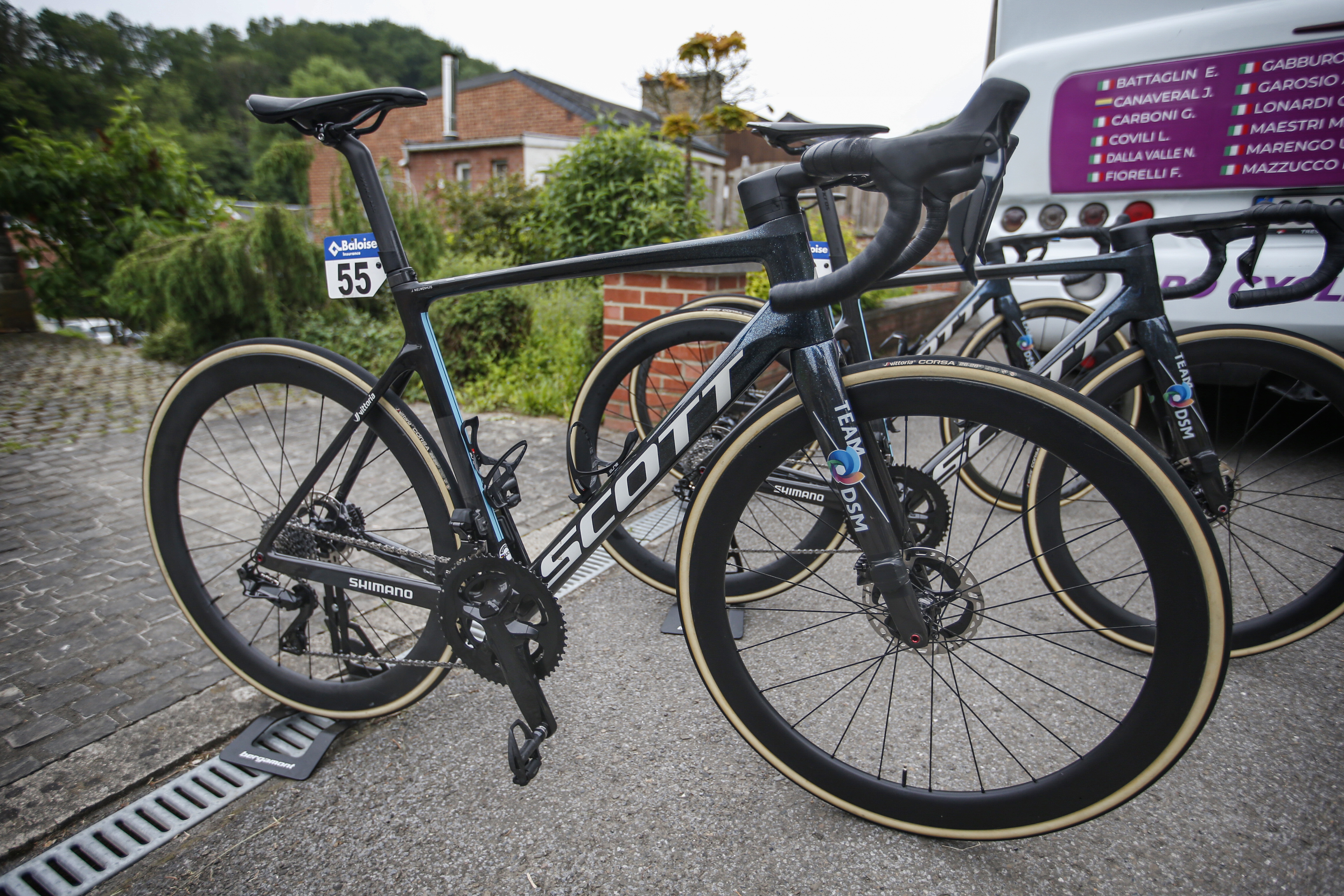
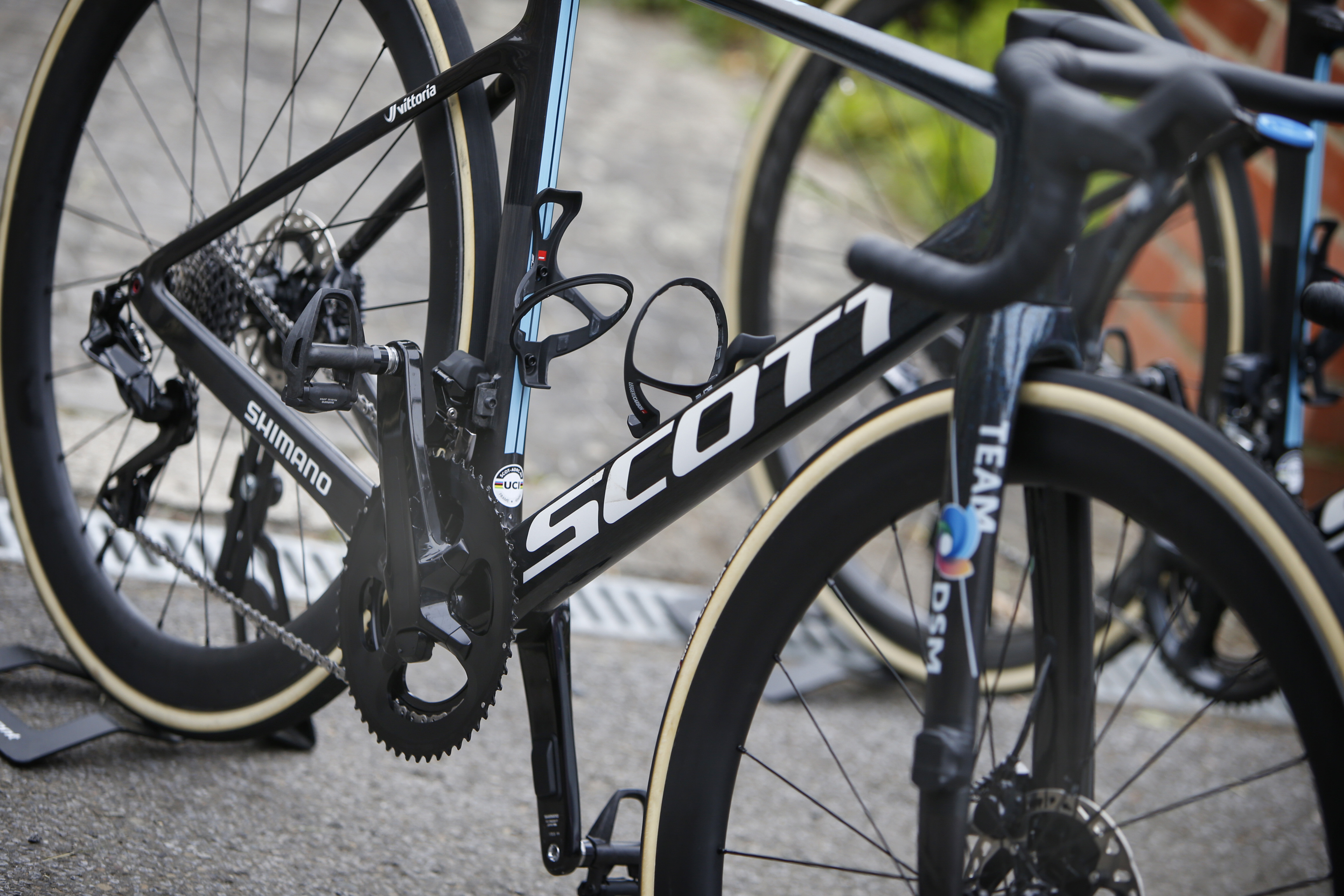

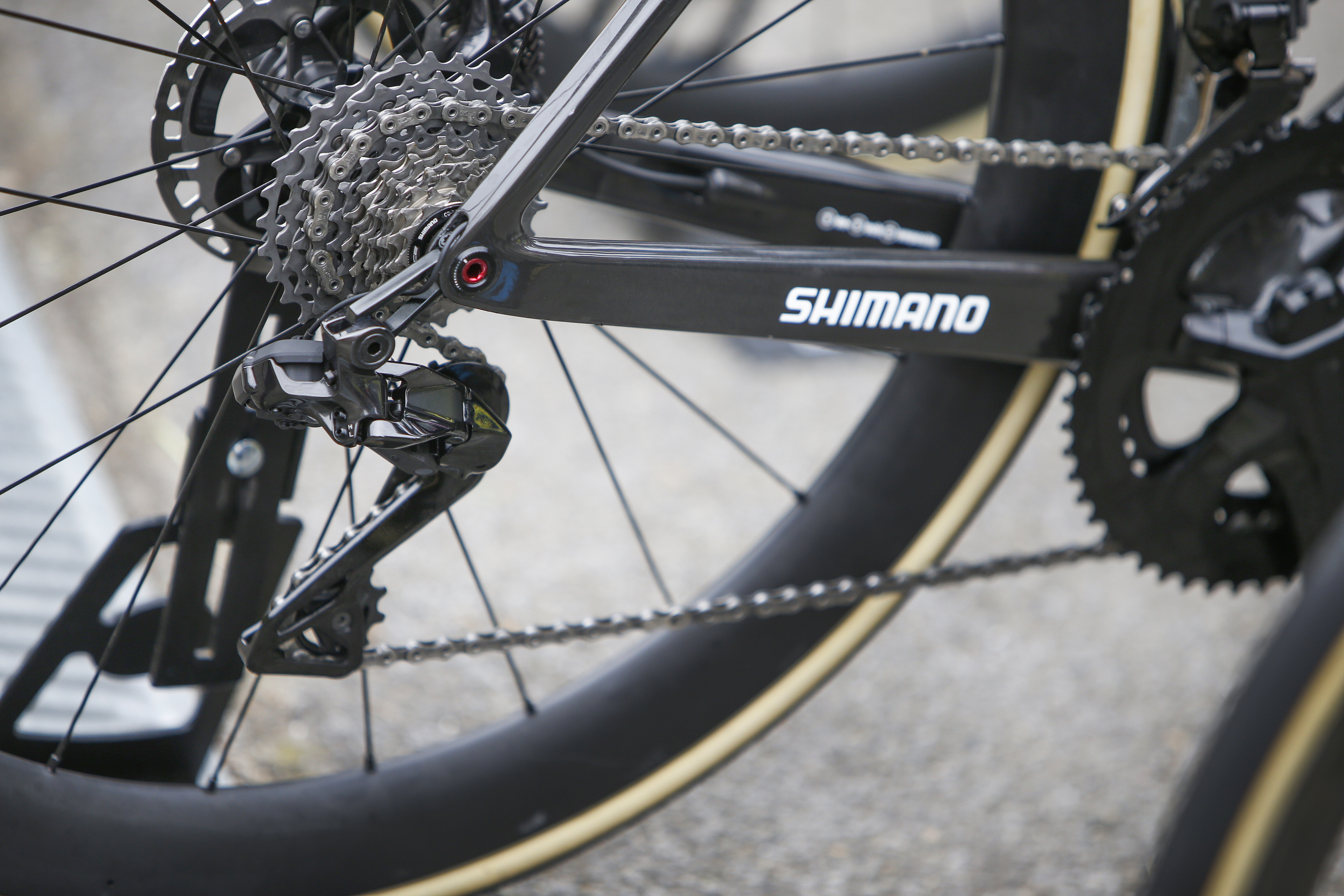
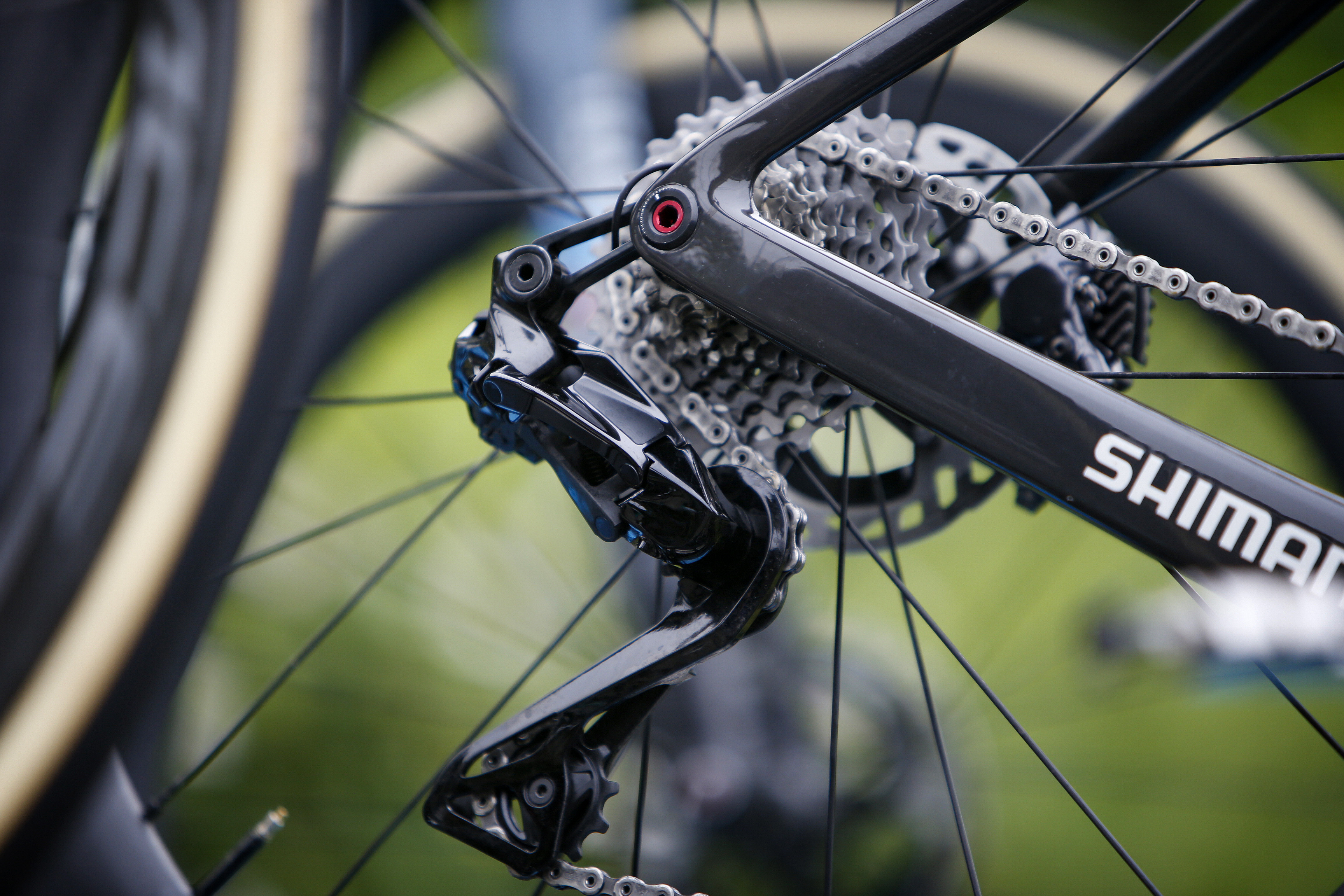
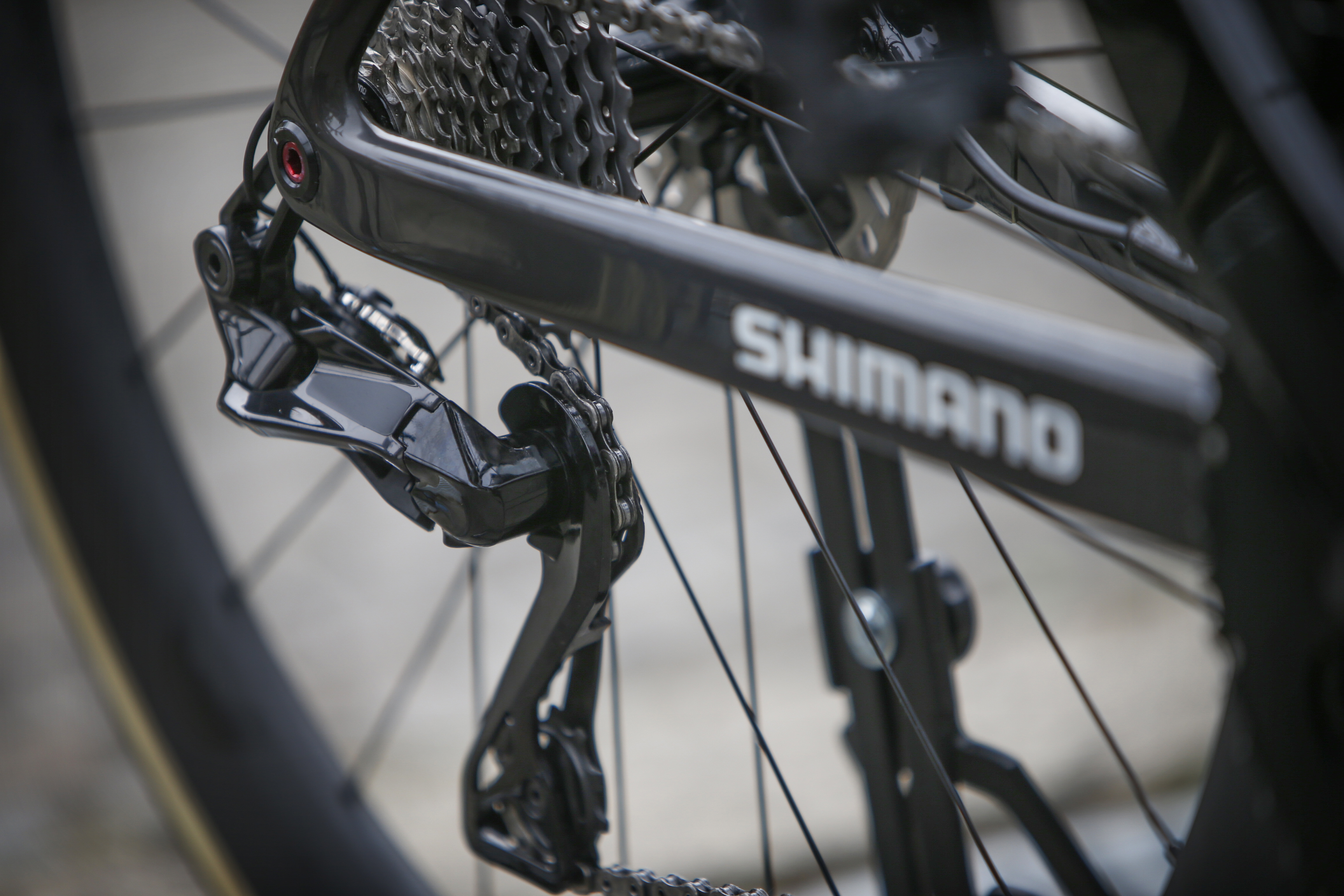
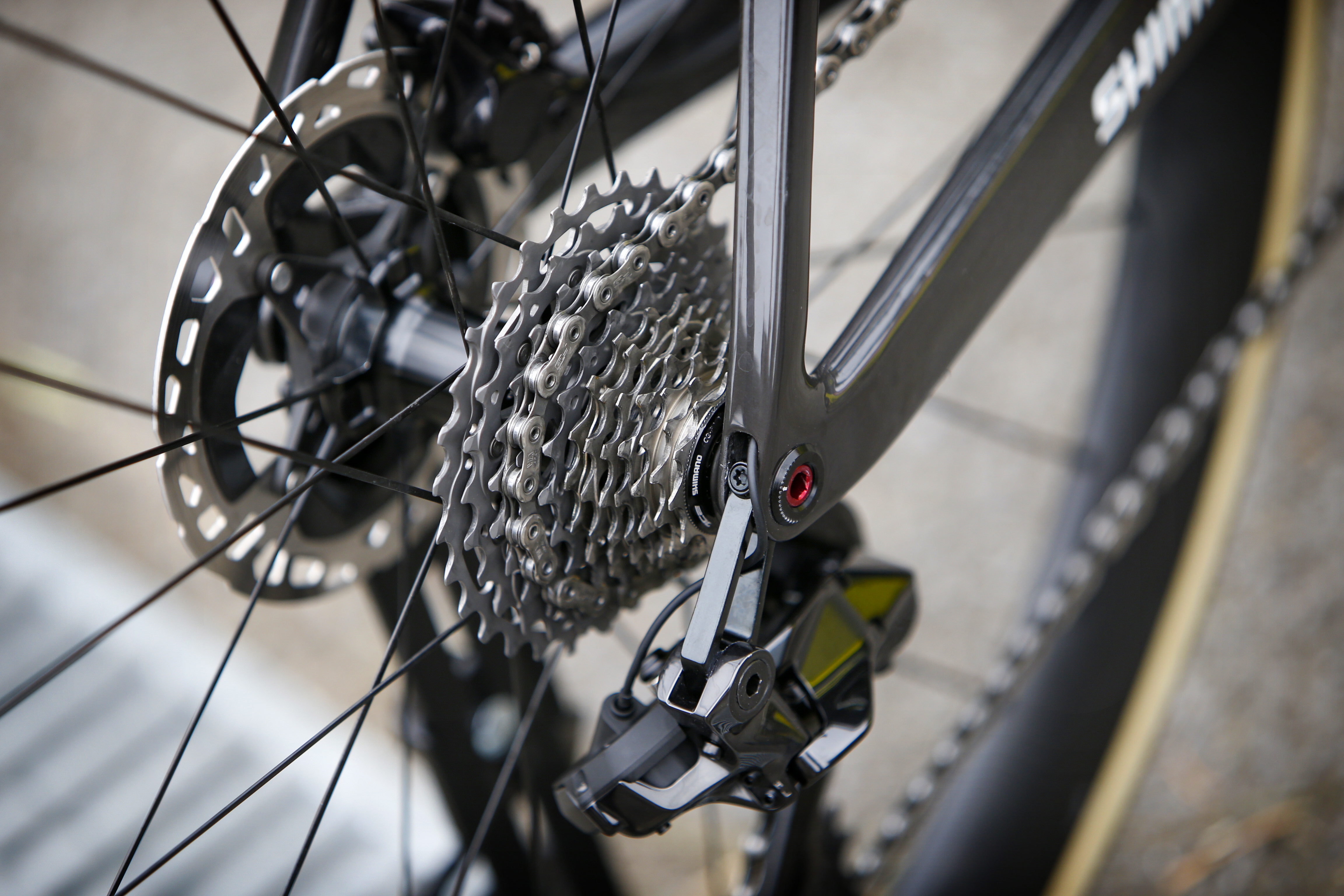
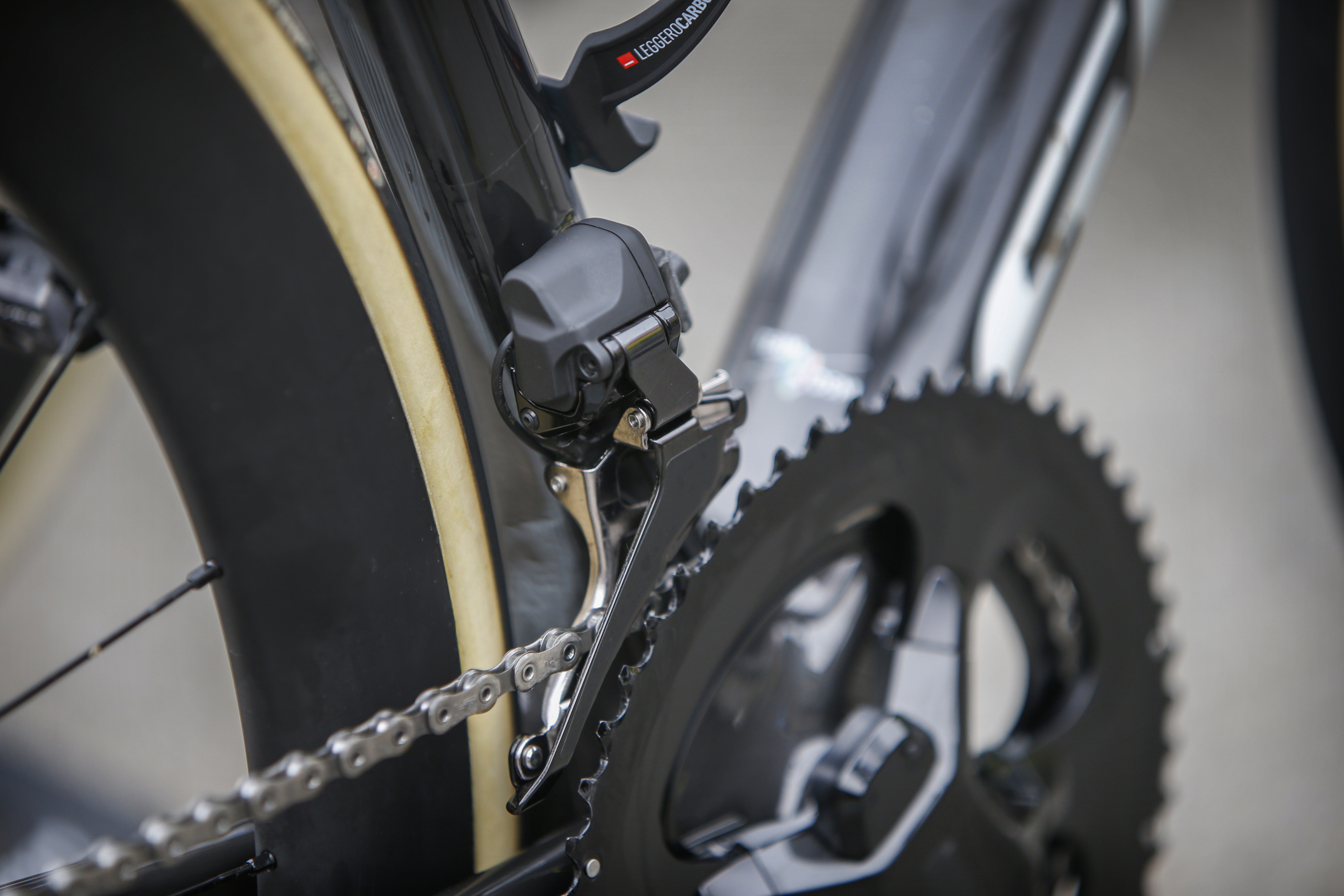
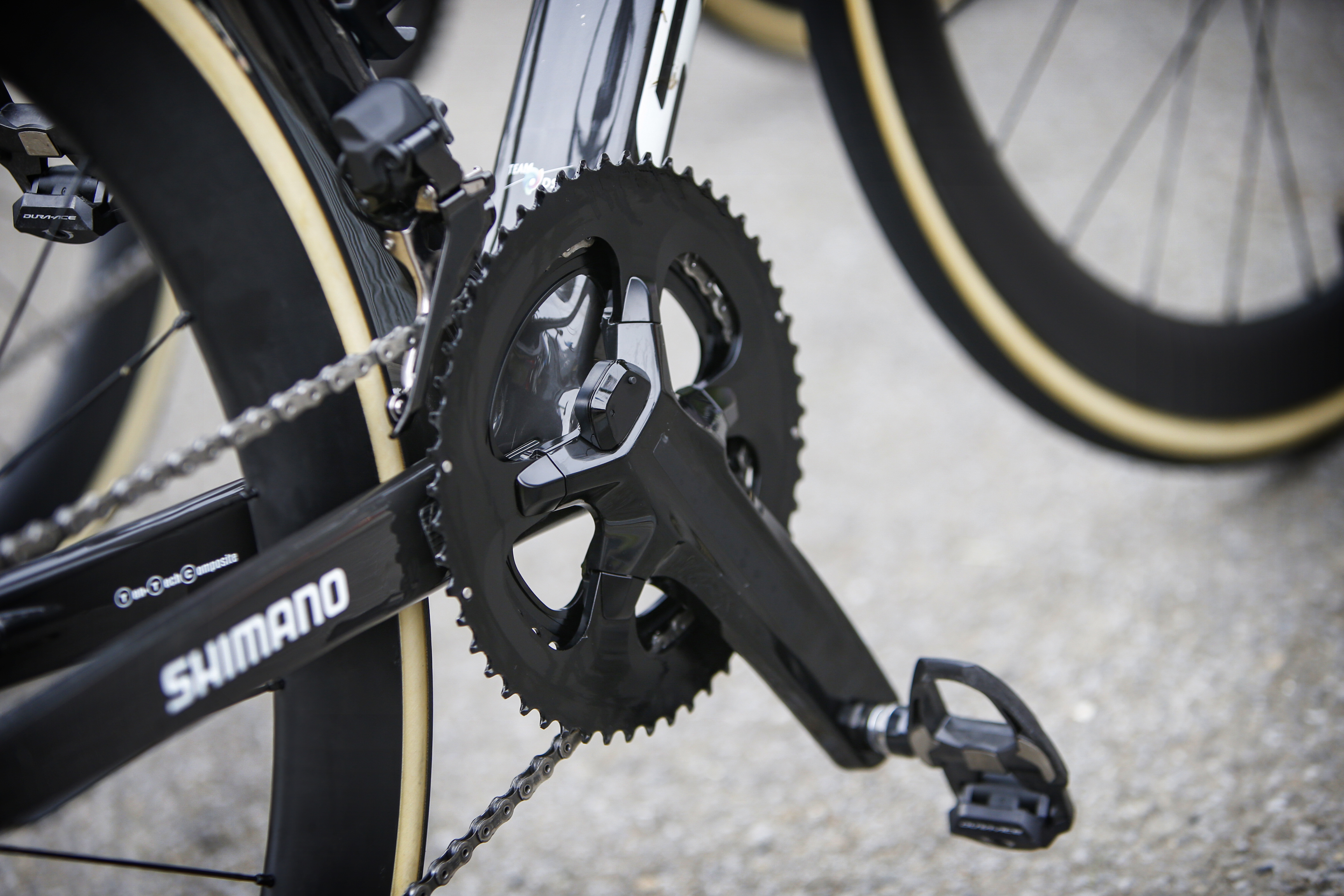
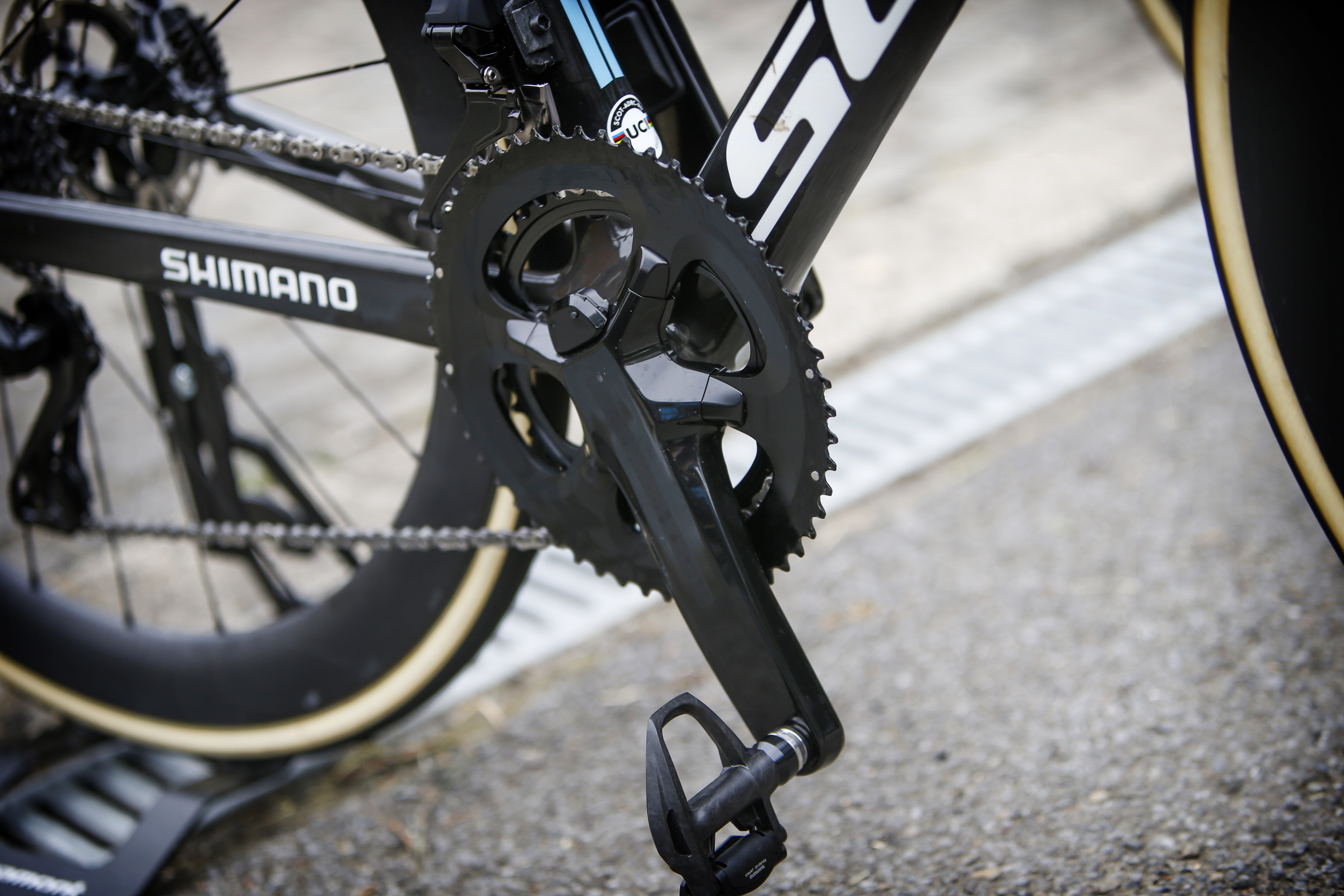
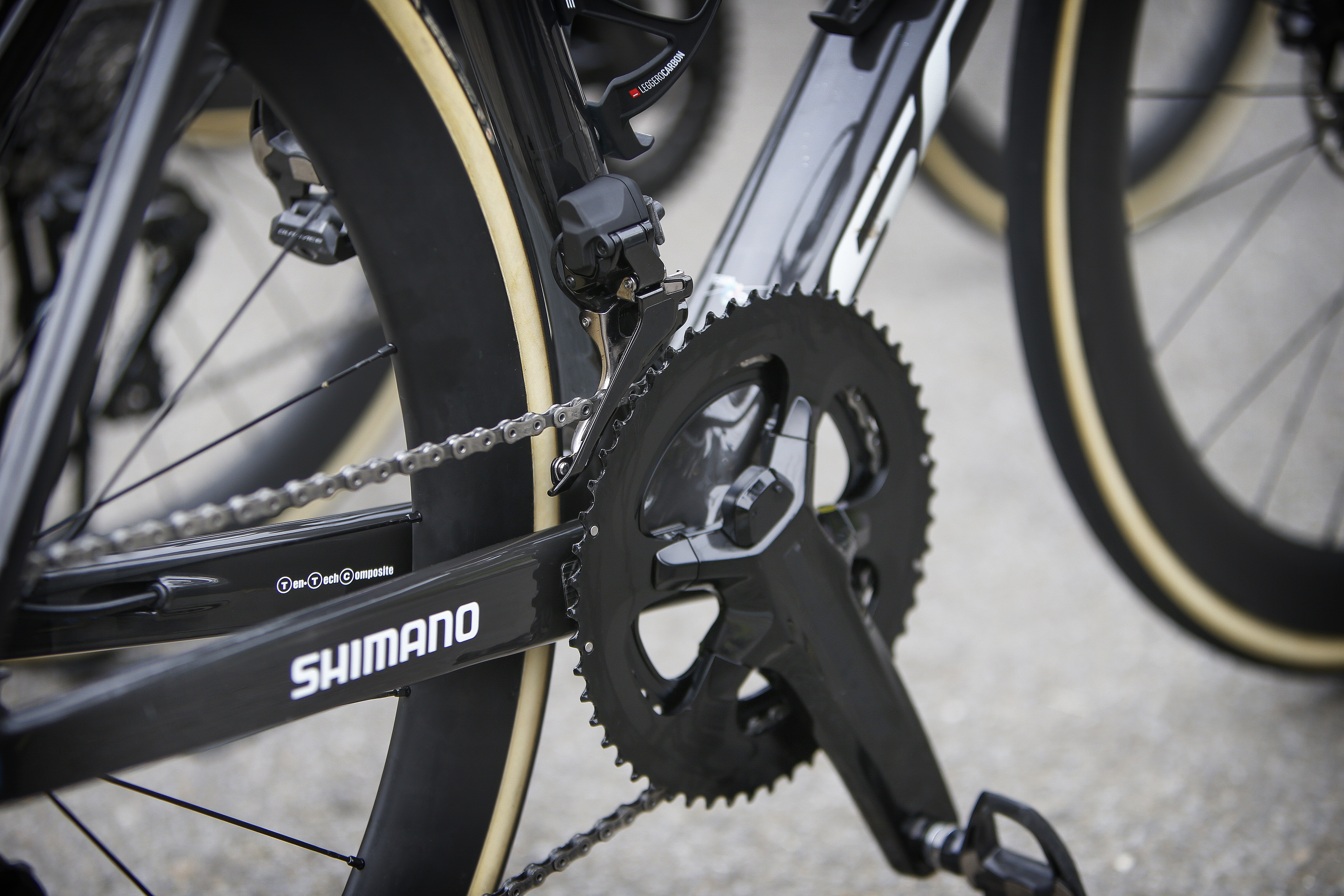
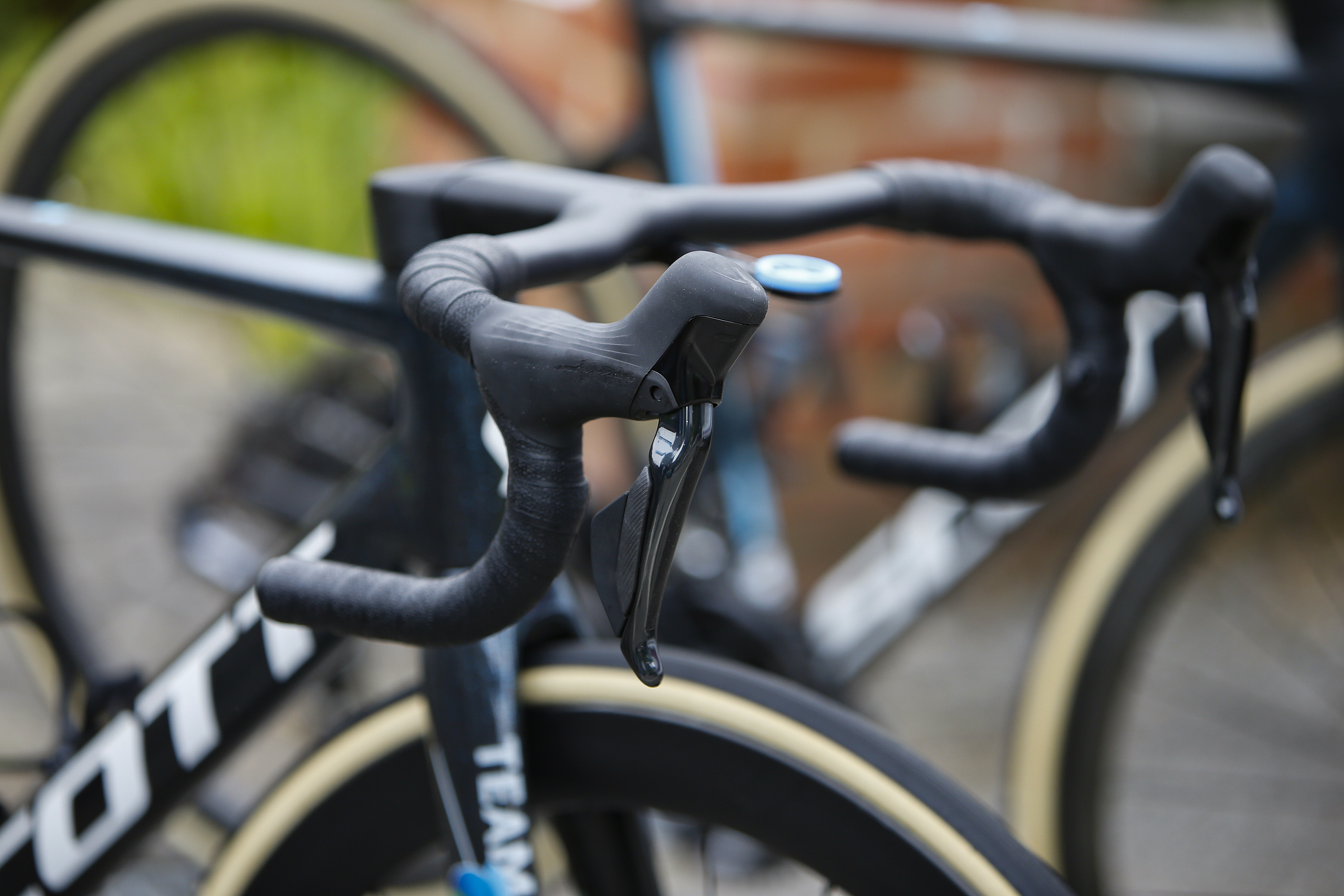
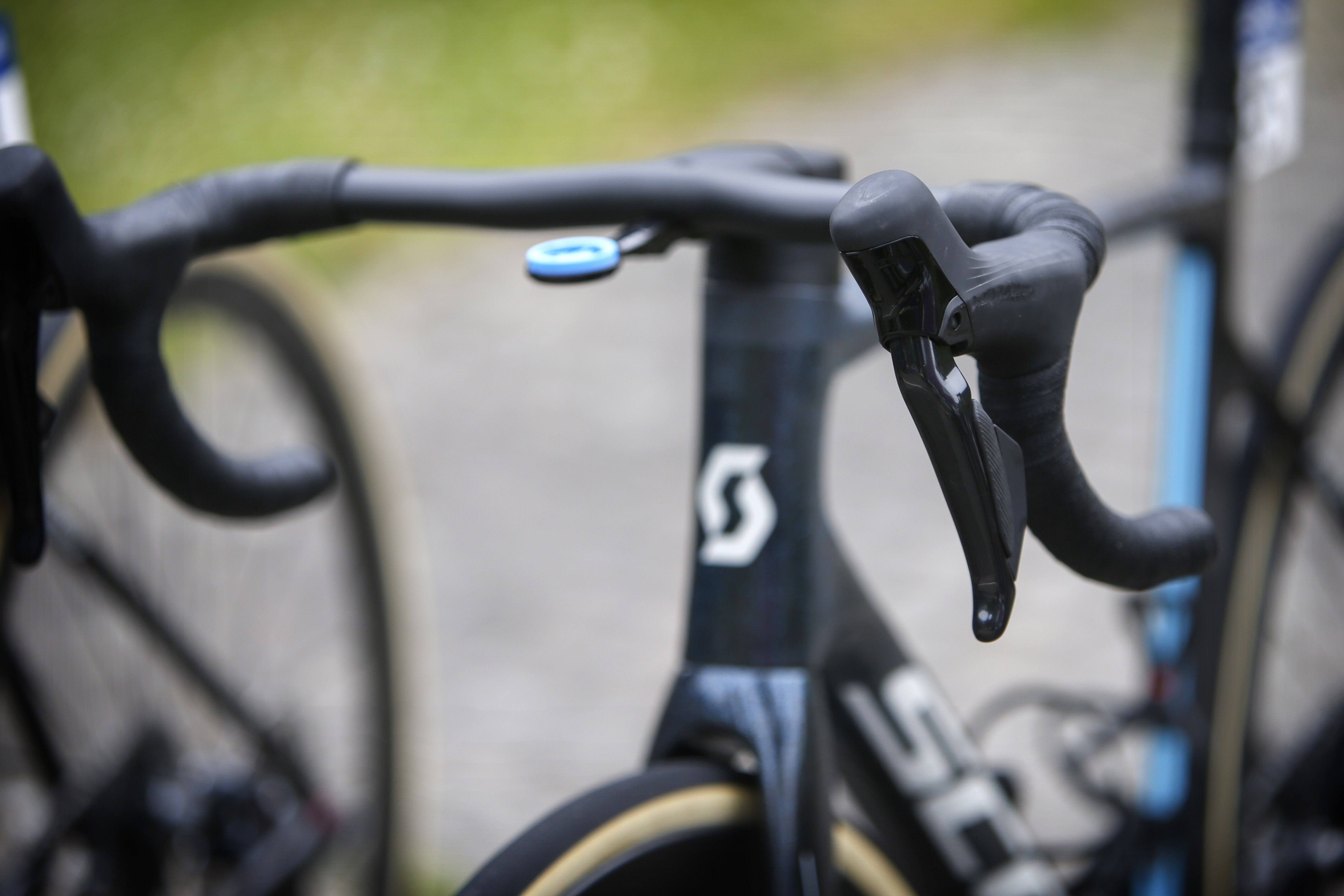
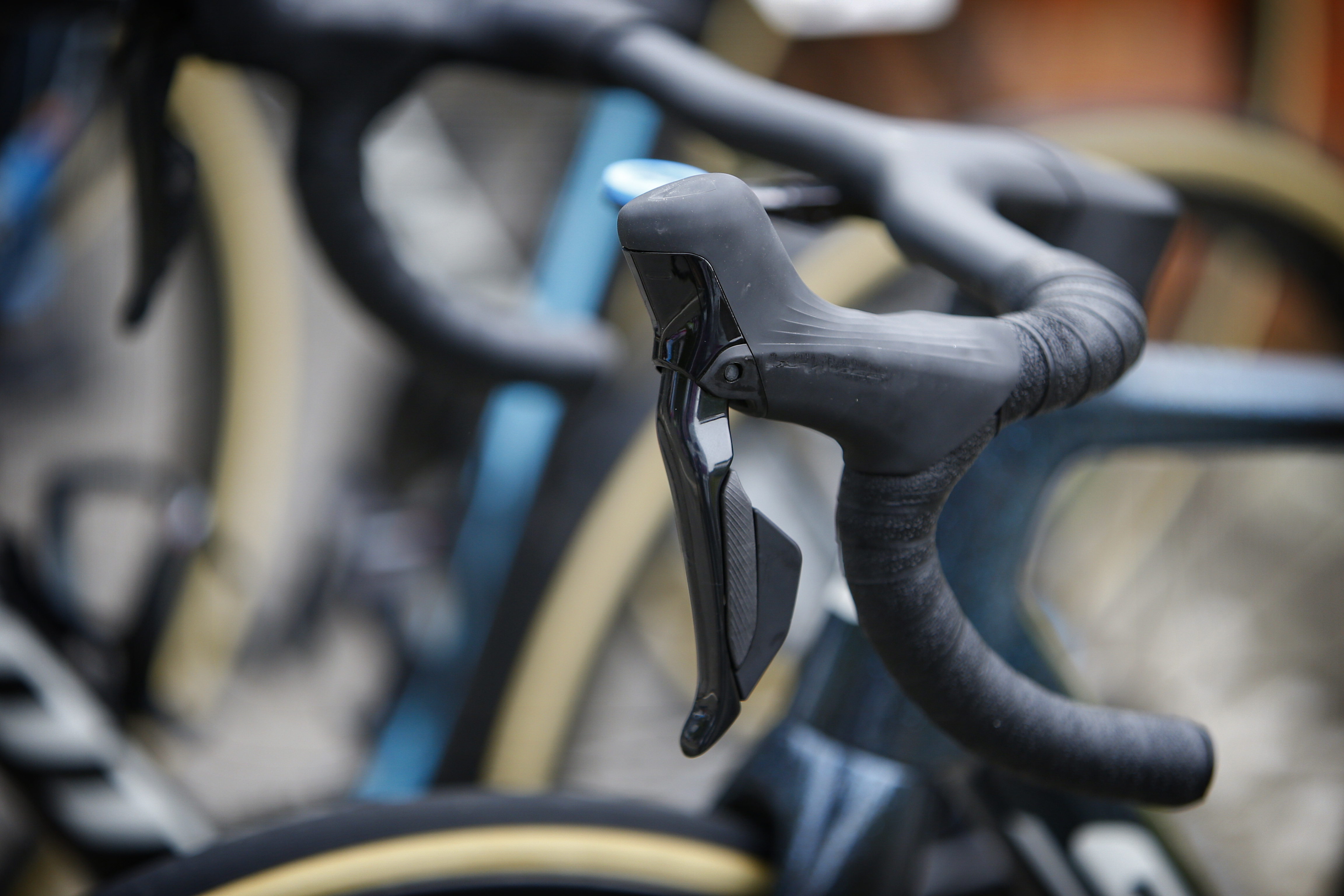
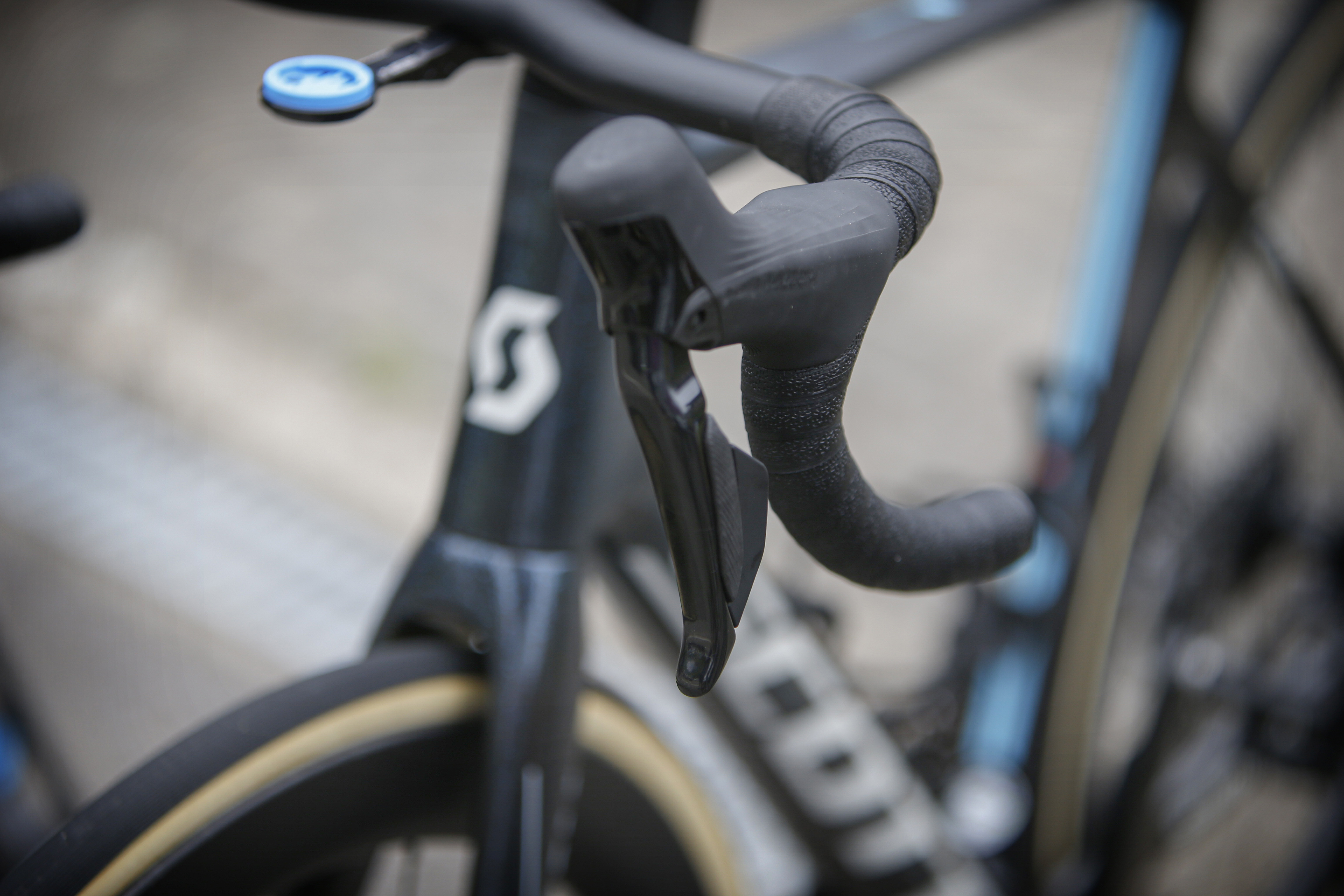
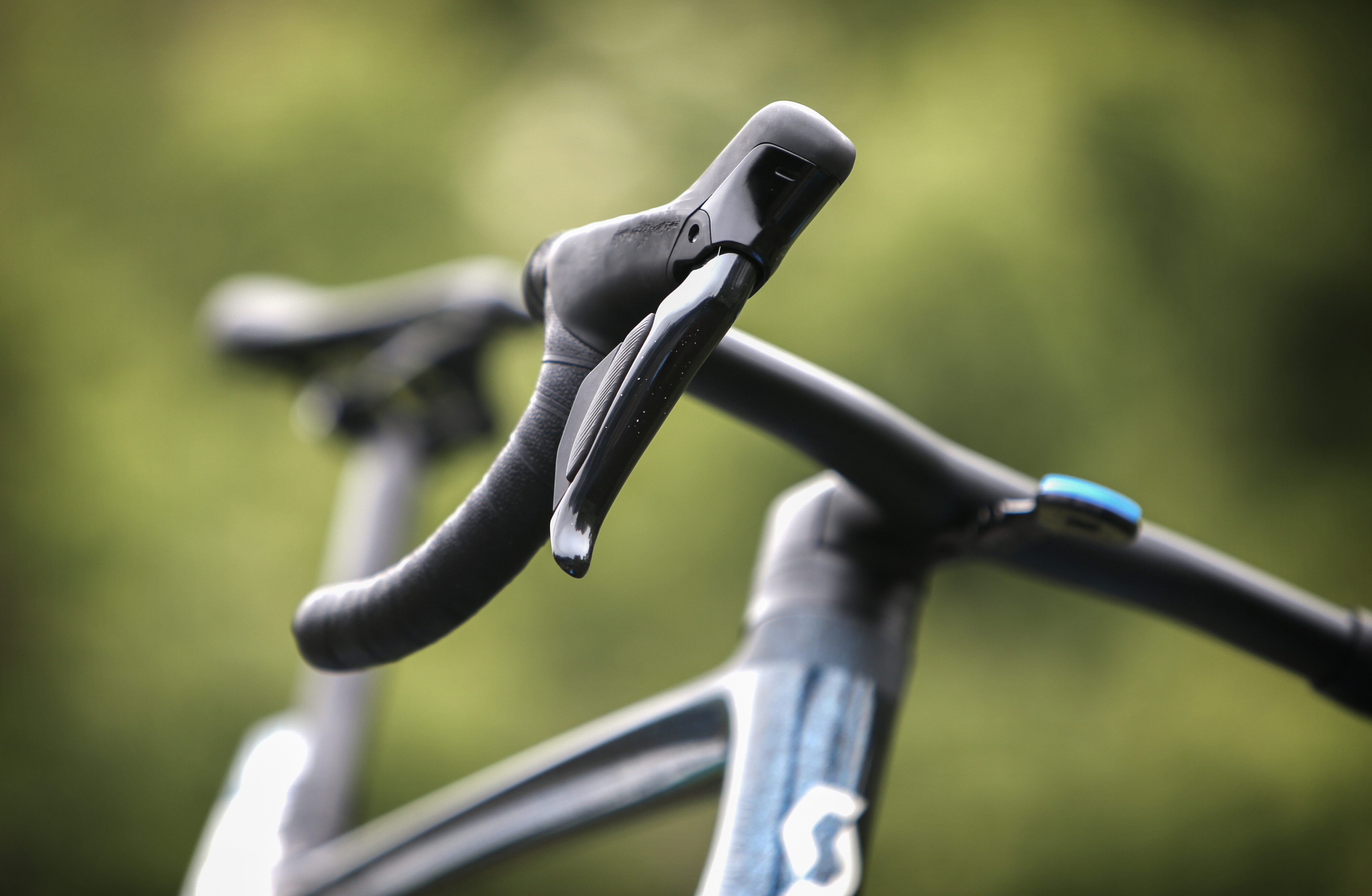
After more than a year of rumours and speculation, the long-awaited first sighting of Shimano's new Dura-Ace groupset is finally upon us.
The groupset, most likely to be known as Dura-Ace R9200, was spotted by BikeRadar fitted to the bikes of Team DSM riders at the Baloise Belgium Tour this week, with Joris Nieuwenhuis apparently being one of the first pros to race with the new groupset.
Spotted on the team's Scott Addict RC bikes, the groupset clearly shares its design DNA with the existing R9100 groupset, but enough has changed to indicate that this is indeed an all-new groupset.
The most notable change is the now-confirmed switch to 12-speed. With SRAM and Campagnolo both launching 12- and even 13-speed groupsets over recent years, it had been widely rumoured that Shimano would follow suit with new Dura-Ace, and with this, the first sighting of the bike in the wild, it appears that the rumours were true.
Aesthetically, the groupset certainly retains some of the cues found on Shimano's former flagship groupset, but there has understandably been a redesign across all components.
One of which is the rear derailleur, which is given an all-new sleek form. Interestingly, however, Shimano has stuck with small pulley wheels despite the rise in popularity of aftermarket oversized systems. The front derailleur's redesign sees it shrink in size compared to its forebear, with a more rounded top.
One of the notable inclusions is that of wires, which protrude from each of these derailleurs. With SRAM operating a fully wireless system, one of the many speculations surrounding the new Dura-Ace groupset is whether or not it would be wired, semi-wireless, or wireless altogether. Neither of the two derailleurs features an obvious removable battery, and the inclusion of these cables will disappoint those hoping that Shimano would become a wire-free affair.
The latest race content, interviews, features, reviews and expert buying guides, direct to your inbox!
However, it must be mentioned at this point that SRAM, prior to the launch of wireless Red eTap, fitted fake wires to their pro riders' groupsets, so as to not give the game away prior to the official launch. Of course, at this stage, we don't know for sure, but as patents have previously suggested, our expectation is that they join to a battery inside the frame, to form a 'semi-wireless' system separate from the shifters.
The shifters themselves have also been updated, with lever blades that are mostly indistinguishable from the existing levers but with a slightly more flared shaping similar to those found on Shimano's GRX gravel groupset. The hoods have changed too, with the most obvious change being an increase in their overall height - potentially due to needing to squeeze in wireless tech and a coin cell battery. The rubber on the hoods has also been amended slightly, with the criss-cross grooves being replaced with straight line ridges.
The changes to the chainset are slightly less obvious, and with the absence of branding, it's unconfirmed whether they will be adorned with Dura-Ace, as per the previous iterations, but our assumption is that they will.
The four-arm 110mm BCD construction remains but the shape of the crank arm seems slightly more symmetrical. On the Team DSM bikes, the chainrings fitted are standard stamped rings, rather than the usual Shimano hollow forged shape which blends seamlessly into the crank arm. It's not confirmed whether this will be standard or not, but our assumption is that the hollow chainrings will remain.
While the long-awaited unveiling of the groupset has helped to answer many questions about the visual appearance of the new Dura-Ace groupset, it hasn't answered many questions regarding function.
Of course, it has confirmed the jump to 12-speed, and that it won't be going to a completely wireless system, but a few questions do still remain.
The most prevalent of which is whether or not Dura-Ace will be available in a rim brake guise. Only a disc brake version of the groupset has been spotted so far, but this is due to the fact that neither of the team's bikes are rim brake-compatible. While patents have previously suggested that rim brakes make the cut, unfortunately at this stage, we still don't know for sure.
As ever, Cyclingnews will continue to keep an eye on the WorldTour peloton to bring you any new sightings as and when they become available, and with the Tour de France around the corner, we expect to see more very soon.

Josh is Associate Editor of Cyclingnews – leading our content on the best bikes, kit and the latest breaking tech stories from the pro peloton. He has been with us since the summer of 2019 and throughout that time he's covered everything from buyer's guides and deals to the latest tech news and reviews.
On the bike, Josh has been riding and racing for over 15 years. He started out racing cross country in his teens back when 26-inch wheels and triple chainsets were still mainstream, but he found favour in road racing in his early 20s, racing at a local and national level for Somerset-based Team Tor 2000. These days he rides indoors for convenience and fitness, and outdoors for fun on road, gravel, 'cross and cross-country bikes, the latter usually with his two dogs in tow.